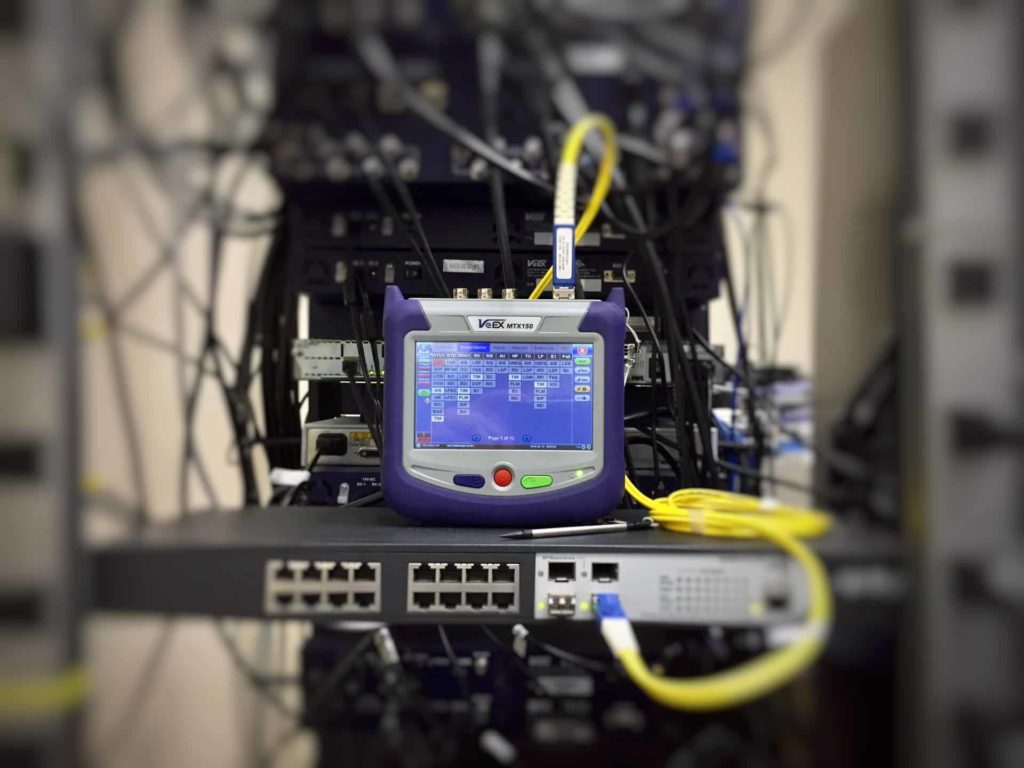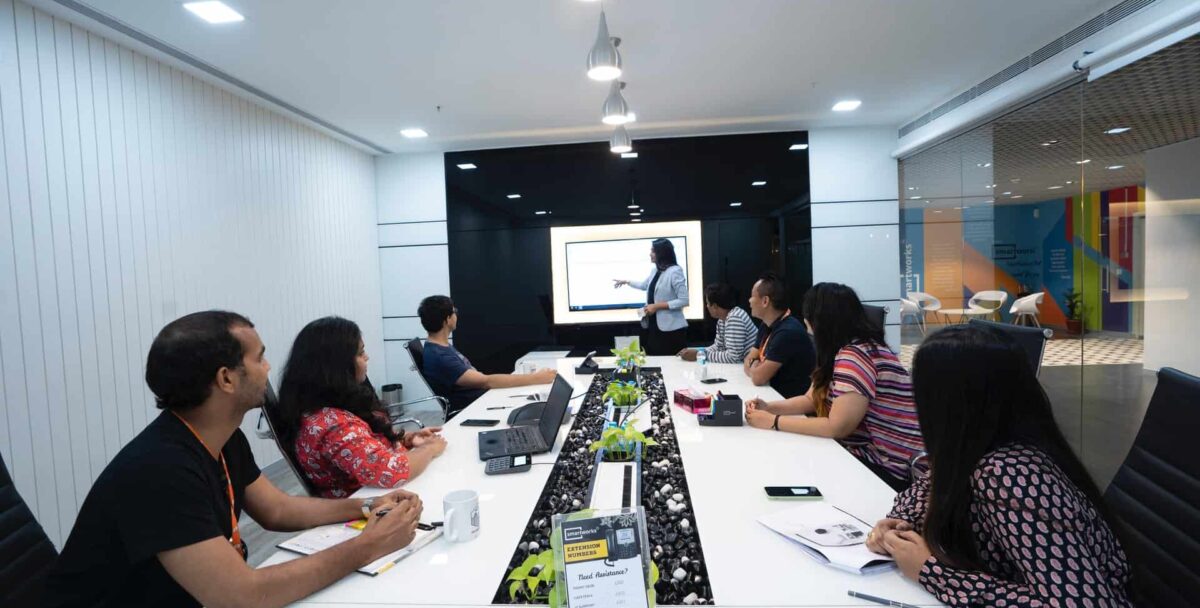The smart building technology market is expected to grow 22% by 2029 based on wide adoption from businesses as they look for ways to improve operational efficiencies and reduce their environmental footprint. We’ll explore the advantages of migrating to smart building technology and what you’ll need to do to integrate all your systems.
What is a Smart Building?
A smart building has a single IT-managed network infrastructure that controls, monitors, and assesses several building-wide systems like lighting, alarms, security, HVAC, etc.
By centrally managing all of these systems from one control center, IT can automate many of the systems for optimal functionality, productivity, and security—saving the enterprise time, money, and overhead.
How Smart Buildings Work
The management infrastructure utilizes artificial intelligence and machine learning to collect data on how the building is used from employee devices, sensors, systems, and on-premise services. It then creates an optimal program based on this data to provide the necessary systems based on demand and routine.
The infrastructure also fortifies the network by learning the behavior of the enterprise so it can identify intrusions or anomalies that may seem out of the norm. This creates greater security because it can also segment and isolate where the attack occurred, enabling IT to act quickly with security measures.
Benefits of a Smart Building
Adopting an intelligent building infrastructure has several key benefits:
- Low Operational Costs: Creating automated programs based on usage lowers operational costs by not running systems when they aren’t needed or by anticipating operational needs for optimal performance.
- Low Energy Costs: Because the building runs only when needed, it makes the facility more energy-efficient, lowering energy costs.
- Increased Flexibility: Because the system can automatically adjust based on the dynamic needs of the building, it can intuitively make changes to allow more flexibility for operational performance and user needs.
- Sustainability & Reduced Environmental Impact: By operating as energy-efficient, a smart building reduces the enterprise’s environmental footprint and utilizes sustainable practices.
- Increased Productivity: Devices, systems, and employees increase their productivity in an intelligent building because it is automated to create the best environment for optimal output.
- Increased Building Value: While it can cost to install intelligent building infrastructure, it will pay you back by increasing the value of the building.
Related Link: Why Build a Smart Building? 3 Benefits to Recognize

Disadvantages of a Smart Building
Aside from the cost, there is only one critical disadvantage of a smart building: increased cyber-attacks. Because the building is completely connected, it creates susceptibility for hackers to find chinks in its armor. There are now more entry points because the whole building is part of the network.
If a hacker could get in through an IoT, they could potentially hijack many of the building’s systems and data. Because of this threat, providing top-notch security is critical to protecting your smart building infrastructure.
An example of this is when Facebook’s building was hacked or at least went down back in 2021. Employees were locked out of the building for several hours, which affected productivity and connectivity and created outages across their major platforms.
To avoid this situation, IT needs to create risk management plans and continuously monitor the network for attacks.
Want a smart building solution that leverages the best products from several top innovative building companies? Contact us to customize the best solution for your enterprise. Related Link: What is a Smart Building and How Will it Benefit You?
What is PoE and How is it Part of a Smart Building Design
Power over Ethernet (PoE) refers to the cabling necessary to power and connect all the devices and hardware throughout the building. PoE provides the necessary power to connect and manage all the devices, sensors, and systems connected to the infrastructure.
PoE devices can include:
- Telephones
- Laptops
- Video Displays and Monitors
- Security Cameras
- Sit/Stand Desks
- Refrigerators
- Lighting
- Wireless Access Points
- Networked Audio
- Door Access
- Digital Signage
- And more…
You’ll want to ensure your PoE is high quality to ensure the productivity and security of the infrastructure.
How to Implement a Smart Building
To prepare your building for an upgrade to smart building status, you’ll need to:
Upgrade the PoE to Enable Robust Wireless Connectivity
Your entire building should be outfitted with optical fiber, CAT6 cabling, and wireless systems to connect all users and devices. You’ll need these cabling and PoE options to handle the data demand of the AI and machine learning systems.
Invest in Future-Proof Technology and Devices
You need to assess your current and long-term goals for the building and how you want to upgrade it into a smart building. Then you want to invest in devices and technology that can meet your current needs and adapt to new technology as you continue to add new products, hardware, and software and expand your building’s capability.
Identify the Best Smart Building Devices for Your Building
Some products are best for new buildings, while others can easily be retrofitted to an existing building. You’ll want to research which smart building devices will integrate best based on your building’s age, type, and leasing regulations.
Start by Enabling One System or Space at a Time
It’s best to start with automating one system and then gradually adding other systems to the smart building infrastructure as you gain experience and understanding of how the system operates. You could also start deploying the tech for one area or high-traffic room of your building to get a sense of how to manage the smart building infrastructure. Then add more locations as bandwidth allows.

Improve Your IT Team’s Skills
To manage, troubleshoot, and administer smart building technology, you’ll need to elevate your IT team’s skills to handle the new system. This will require educating and training your team to understand how the system works and how to operate for maximum efficiency.
Adding Smart Building Technology Can Increase Efficiency and Productivity
Adding intelligent building devices and technology will significantly improve your building’s operational efficiency and increase productivity by creating an optimal work environment that can adjust automatically to change. Your IT team will also be able to work more effectively managing all the different systems from one command center.
C&C Technology Group can customize an innovative building solution for elevating your audio visual, data center, cabling, PoE Lighting, and communications, leveraging the best products on the market for maximum efficiency.
Are you looking to optimize your building’s efficiency? Learn more about our Smart Building Solution. Related Link: What is the Living Building Challenge?
Last Updated on March 30, 2023 by Josh Mahan




